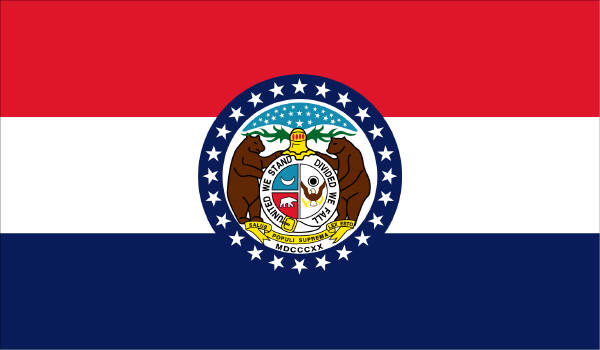It’s the 12 Days of Ballotpedia! Your gift powers the trusted, unbiased information voters need heading into 2026. Donate now!
Missouri Amendment 4, Expansion of Supreme Court Measure (1908)
| Missouri Amendment 4 | |
|---|---|
| Election date |
|
| Topic Salaries of government officials and State judiciary structure |
|
| Status |
|
| Type Legislatively referred constitutional amendment |
Origin |
Missouri Amendment 4 was on the ballot as a legislatively referred constitutional amendment in Missouri on November 3, 1908. It was defeated.
A "yes" vote supported amending the Missouri State Constitution to establish a new division in the Supreme Court, increase the number of judges from seven to nine, and raise the salaries of Supreme Court and Kansas City Court of Appeals judges to $5,500. |
A "no" vote opposed amending the Missouri State Constitution to establish a new division in the Supreme Court, increase the number of judges from seven to nine, and raise the salaries of Supreme Court and Kansas City Court of Appeals judges to $5,500. |
Election results
|
Missouri Amendment 4 |
||||
|---|---|---|---|---|
| Result | Votes | Percentage | ||
| Yes | 142,790 | 45.41% | ||
| 171,658 | 54.59% | |||
-
- Results are officially certified.
- Source
Text of measure
Ballot title
The ballot title for Amendment 4 was as follows:
| “ | An amendment creating a new division of the Supreme Court and increasing the number of judges from seven to nine; also increasing the pay of judges of the Supreme Court and Kansas City Court of Appeals to $5,500. | ” |
Path to the ballot
- See also: Amending the Missouri Constitution
A simple majority vote is required during one legislative session for the Missouri General Assembly to place a constitutional amendment on the ballot. That amounts to a minimum of 82 votes in the Missouri House of Representatives and 18 votes in the Missouri State Senate, assuming no vacancies. Amendments do not require the governor's signature to be referred to the ballot.
See also
External links
Footnotes
State of Missouri Jefferson City (capital) | |
|---|---|
| Elections |
What's on my ballot? | Elections in 2025 | How to vote | How to run for office | Ballot measures |
| Government |
Who represents me? | U.S. President | U.S. Congress | Federal courts | State executives | State legislature | State and local courts | Counties | Cities | School districts | Public policy |


